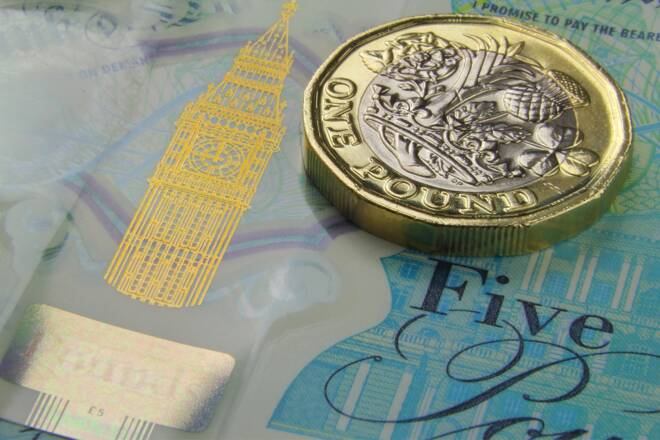Advertisement
Advertisement
GBP to USD Forecast: Bears Target Sub-$1.27 on Recession Jitters
By:
The GBP to USD struggled this morning, with UK retail sales figures and a slide in China exports weighing. Later today, Fed chatter could inflict more pain.
Highlights
- This morning, BRC Retail Sales Monitor figures for July delivered early disappointment, testing the theory of economic resilience.
- However, Bank of England Chief Economist Huw Pill signaled more rate hikes, raising the threat of an economic recession.
- Nonetheless, the nearer-term indicators are bearish, with sub-$1.27 in view.
On Monday, the GBP to USD gained 0.36% to wrap up the day at $1.27834. Central bank commentary delivered the gains, with Bank of England Chief Economist Huw Pill signaling more interest rate hikes. In contrast, FOMC Vice Chair John Williams spoke of rate cuts in 2024 if inflation softens.
It is a quiet day ahead for the GBP to USD. There are no UK economic indicators for investors to consider. The lack of economic indicators will leave central bank commentary to influence.
However, no Bank of England Monetary Policy Committee Members are on the calendar to speak today, leaving chatter with the media to move the dial.
On Monday, Bank of England Chief Economist Huw Pill held a live monetary policy report Q&A session. Significantly, Huw Pill noted that food inflationary pressure may not subside, suggesting more rate hikes.
Earlier this morning, economic indicators from the UK and China set the tone.
The UK BRC Retail Sales Monitor increased by 1.8% year-over-year in July versus 4.2% in June. Economists forecast a 3.8% increase.
However, trade data from China had more impact. Exports from China tumbled by 14.5% in July versus a 12.4% decline in June. Imports slumped by 12.4% versus a more modest 6.8% fall in June. Economists forecast exports to fall by 9.8% and imports to decline by 5.6%. The dollar trade surplus widened from $70.62 billion to $80.60 billion.
The US Session
US trade data will be in focus later in the day. However, the numbers are unlikely to influence the Fed and, therefore, the dollar.
The US trade – GDP ratio stood at 25.48% in 2021 and, importantly, is not a Fed focal point, limiting the impact of US trade data on the US dollar.
However, investors should monitor the news wires for Fed chatter with the media. FOMC members Barkin and Harker are on the calendar to speak today.
GBP to USD Price Action
Daily Chart
The Daily Chart showed the GBP to USD sat below the $1.2785 – $1.2862 resistance band. However, looking at the EMAs, the GBP to USD held above the 50-day ($1.27439) and 200-day ($1.24495) EMAs, sending bullish near and longer-term price signals.
Notably, the 50-day EMA flattened on the 200-day EMA, signaling a shift in sentiment.
However, looking at the 14-Daily RSI, the 46.12 reading sent bearish price signals. The RSI signals a fall through the 50-day EMA ($1.27439) to sub-$1.27. A hold above the 50-day EMA ($1.27439) would support a breakout from the $1.2785 – $1.2862 resistance band to target $1.29.
4-Hourly Chart
Looking at the 4-Hourly Chart, the GBP to USD hovers below the $1.2785 – $1.2862 resistance band. The GBP to USD also sits below the 50-day ($1.27839) and 200-day ($1.27919) EMAs, sending bearish near and longer-term price signals.
Significantly, the 50-day EMA pulled back from the 200-day EMA, a bearish price signal. However, a GBP to USD move through the EMAs would support a breakout from the $1.2785 – $1.2862 resistance band to give the bulls a look at $1.29.
The 14-4H RSI reading of 49.11 sends moderately bearish signals, with selling pressure outweighing buying pressure. Significantly, the RSI signals a pullback to sub-$1.27.
About the Author
Bob Masonauthor
With over 28 years of experience in the financial industry, Bob has worked with various global rating agencies and multinational banks. Currently he is covering currencies, commodities, alternative asset classes and global equities, focusing mostly on European and Asian markets.
Did you find this article useful?
Latest news and analysis
Advertisement
